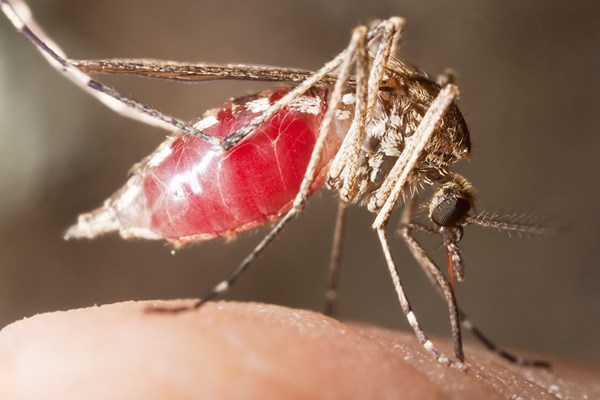Editor’s Note: This is a commentary from Roberta Dwyer, DVM, MS, DACVPM, of the Department of Veterinary Science, Gluck Equine Research Center, University of Kentucky. It appeared in the Equine Disease Quarterly, funded by underwriters at Lloyd’s, London, brokers and their Kentucky agents.
 Credit: Thinkstock When it became obvious that the mosquito-transmitted disease was spreading across the United States causing disease and deaths in horses, researchers utilized available information to start the wheels turning toward disease prevention.
Credit: Thinkstock When it became obvious that the mosquito-transmitted disease was spreading across the United States causing disease and deaths in horses, researchers utilized available information to start the wheels turning toward disease prevention.Just today (early September), the first 2014 equine case of West Nile virus (WNV) encephalitis was confirmed in Kentucky. The 5-year old horse was euthanized after advanced neurological symptoms developed. She had no history of being vaccinated for WNV.
The cost of euthanasia and disposal was much more than any WNV vaccine.
And yet the same story happens year after year, not only in Kentucky, but around the country, with a disease for which there are safe, efficacious vaccines.
West Nile virus was first discovered in 1937 in Africa, but prior to 1999, few Americans had any reason to know about it since it was a foreign animal disease. No one worried about it. After all, it was an ocean away and someone else’s problem … until the first cases were diagnosed in New York.
When it became obvious that the mosquito-transmitted disease was spreading across the United States causing disease and deaths in horses, researchers utilized available information to start the wheels turning toward disease prevention. By 2001 a licensed WNV vaccine was available for horses in the U.S., with other equine vaccines being produced subsequently. To date, no human WNV vaccine is licensed in the U.S., despite annual human cases since 1999. In 2013, 2,469 human cases of WNV were reported in the U.S., according to the Centers for Disease Control and Prevention.
The diseases pythiosis and leishmaniasis might be new to readers of this issue of the Quarterly; however, equine cases of both diseases have been diagnosed in the U.S. Just because a disease is rare in a state or country doesn’t mean horse owners shouldn’t be aware and vigilant, just like WNV taught us. The world is a small place, considering the rapid national and global transportation of horses for competition, breeding and sales.
Horse owners recognizing clinical signs and calling a veterinarian is the backbone of all disease surveillance. Research is the basis for improving disease diagnosis, treatment and prevention.
Prior to Spring 2014, North Americans likely only knew about Ebola virus from reading Richard Preston’s book The Hot Zone, popular in the 1990s. This disease takes on new meaning when the nightly news shows affected people in Western Africa [and now in the United States] suffering and dying from this disease.
And, while horses are not affected with Ebola virus, who would have thought that a tobacco plant would be involved in the production of a serum that might be able to treat this deadly disease? Before this outbreak, such research would likely have been considered a waste of money, but now we can all hope that further research into treatment and prevention can rapidly progress to stop this tragedy.
It is tempting to ignore information and research into uncommon or so-called exotic diseases that have no immediate impact on our own horses without taking into account the indisputable fact that someone else’s problem today can become our problem tomorrow.


